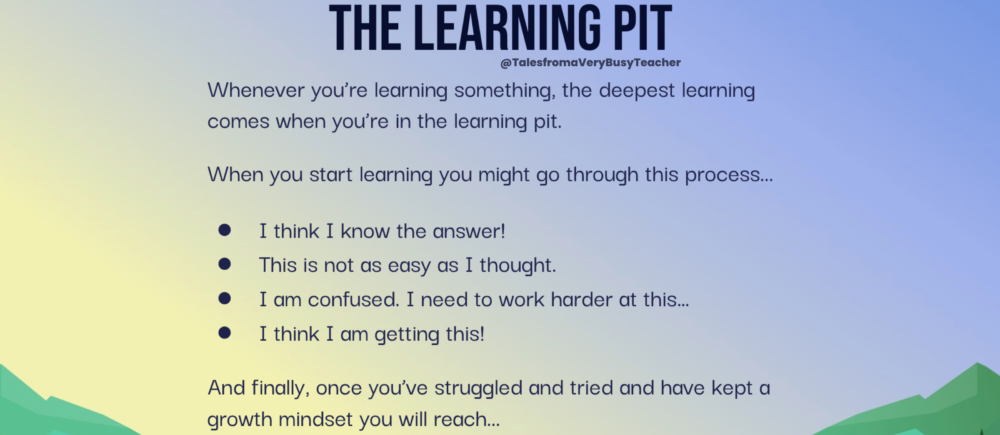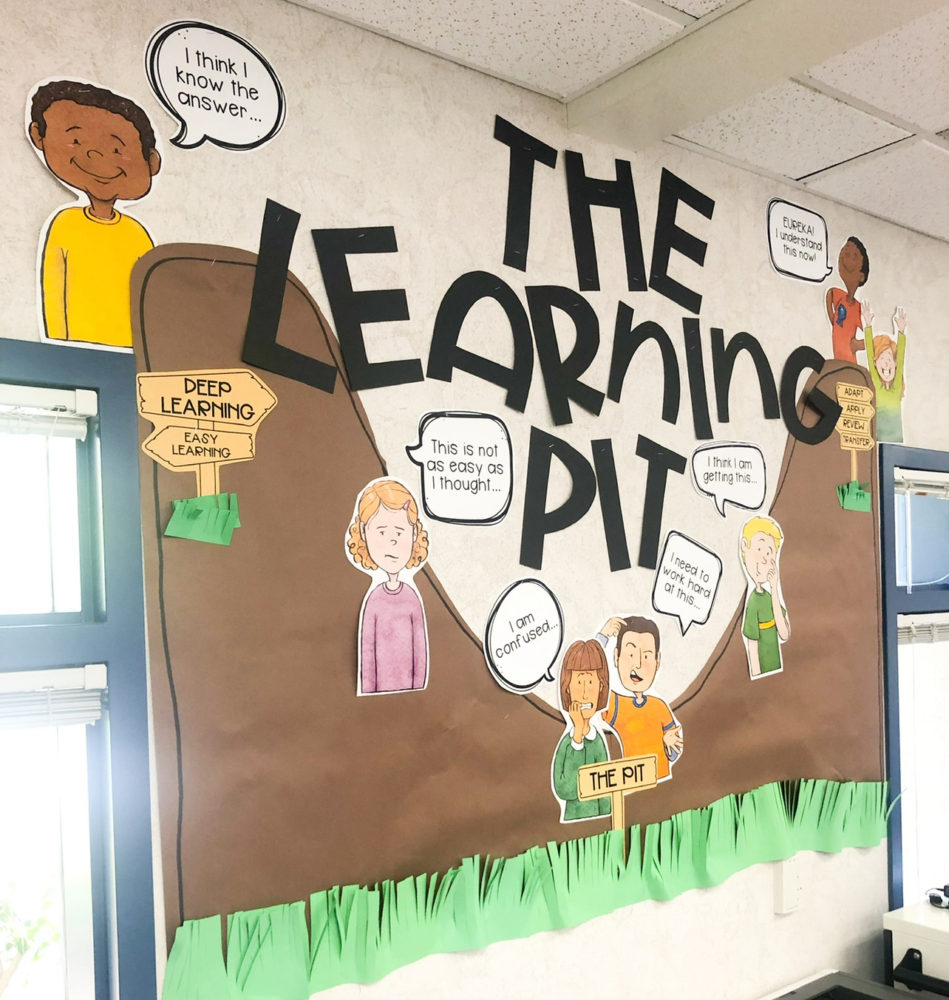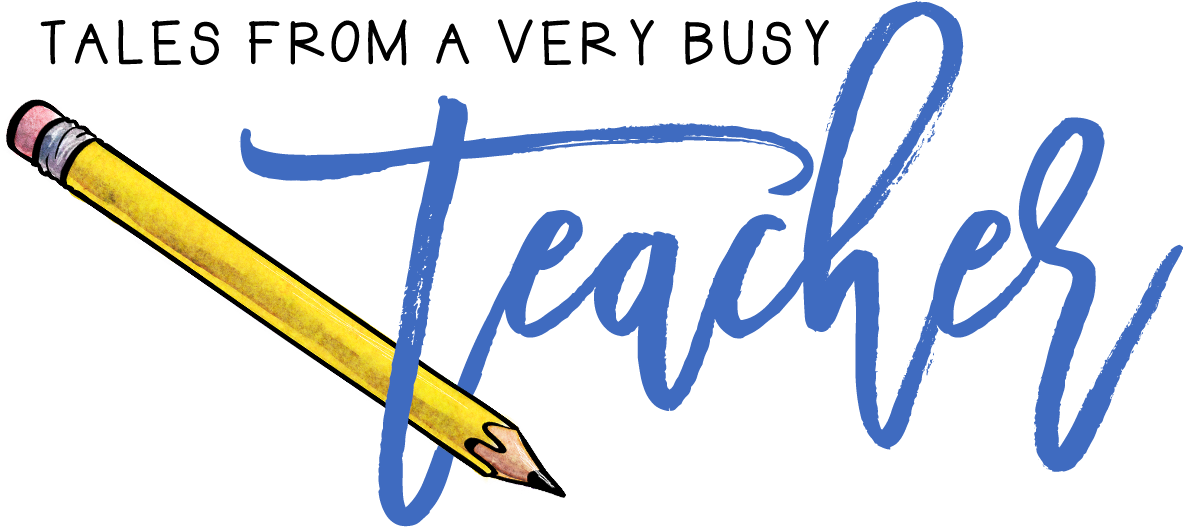One of the best things I ever taught my students was that it’s okay to struggle. Struggling develops grit and perseverance and leads to success. The way I taught this to my students was by introducing the “Learning Pit.” I also created a dedicated “Learning Pit” space on our classroom walls that we could refer to as we were learning new concepts.
What is the Learning Pit?
The Learning Pit, which is part of The Learning Challenge, was first created by James Nottingham. Nottingham is the co-founder and director of Challenging Learning, an education company that helps strengthen education for young people by working with educators around the world with professional development opportunities, including keynote speakers and consultation. The Learning Challenge helps students think and talk about learning by promoting “challenge, dialogue, and a growth mindset.”
When students talk about their own learning, it helps them to understand the progress they are making.
At the center of the Learning Challenge is the Learning Pit. According to Nottingham, a learner enters the Learning Pit when they’ve “uncovered lots of examples and exceptions” to the concept, and they’ve realized that it’s pretty complex (Nottingham et al. 2018, 5). This is where deep learning begins to take place.
When students enter the Learning Pit, it is important to remind them about the deep learning that is taking place. Students may get frustrated or want to give up, but this is your opportunity as a teacher to remind them to keep a growth mindset. Students will overcome the Learning Pit and eventually reach the eureka stage of the Learning Challenge. This is when they feel a sense of understanding and the satisfaction of learning. It is important to celebrate when students persevere through the Learning Pit. You’re acknowledging that it pays off to work through challenges.
How to Teach the Learning Pit to Your Students
I have had great success introducing the Learning Challenge concept to my students. We have honest conversations about being willing to admit when you’re struggling or avoiding something we think is too hard. These conversations create a stronger teacher-student relationship. Students feel comfortable sharing their fears or being unable to process learning a certain skill at that moment. This creates an opportunity for students to change their negative feelings toward learning. They’ll be more willing to put in the work in order to reach the eureka phase of the Learning Challenge.

I also explicitly teach what the learning pit means and how we all go through the learning pit when we’re learning something new. I do this by going through my Learning Pit lesson and engaging students in conversations about things they’ve struggled with while learning. Students have an opportunity to share with partners and think about the circumstances they’ve faced while struggling. We talk about the learning process and then I introduce students to the pit.
How to Refer to the Learning Pit While You’re Teaching
I set up a space in my classroom to create a Learning Pit bulletin board. This helped my students and me as we went through learning new skills. It was a great reference point and my students started referring to it on their own as they would make progress towards learning new skills.

The Learning Pit and Teacher Clarity
Teacher Clarity is the communication between teachers and students, in both ways. Not just a teacher telling their students what to do, but students communicating to their teachers how they’re feeling and the learning goals, their levels of understanding, and what support they still need. You can also think about it as making sure you understand what your students need to learn, and that you can identify how they will know that they learned it.
The Learning Pit promotes Teacher Clarity because students are aware of their own learning and understand where they’re at in the learning process. Integrating this idea through your teaching will help your students’ achievement.
For Learning Pit classroom resources, check out my TpT store.




